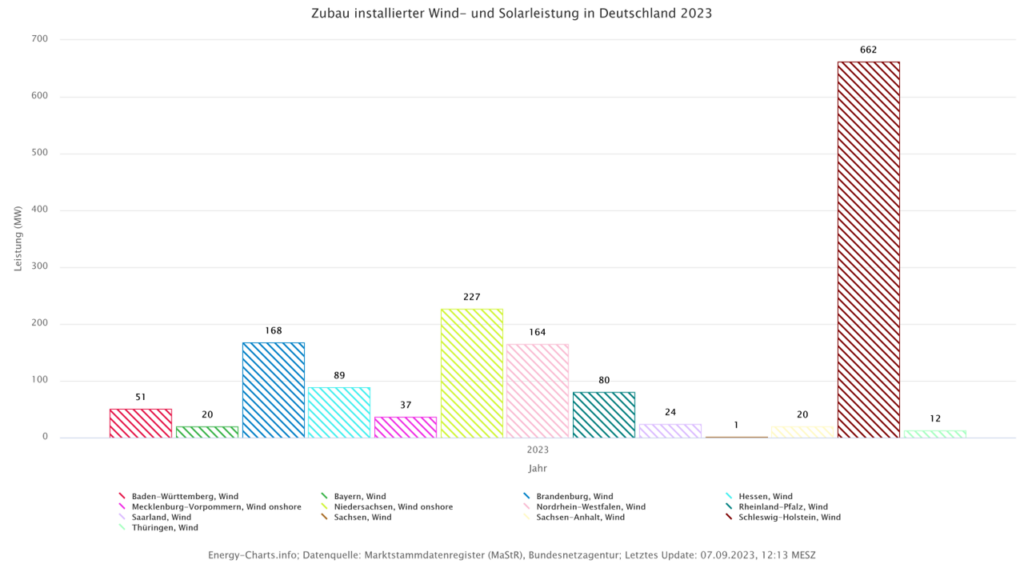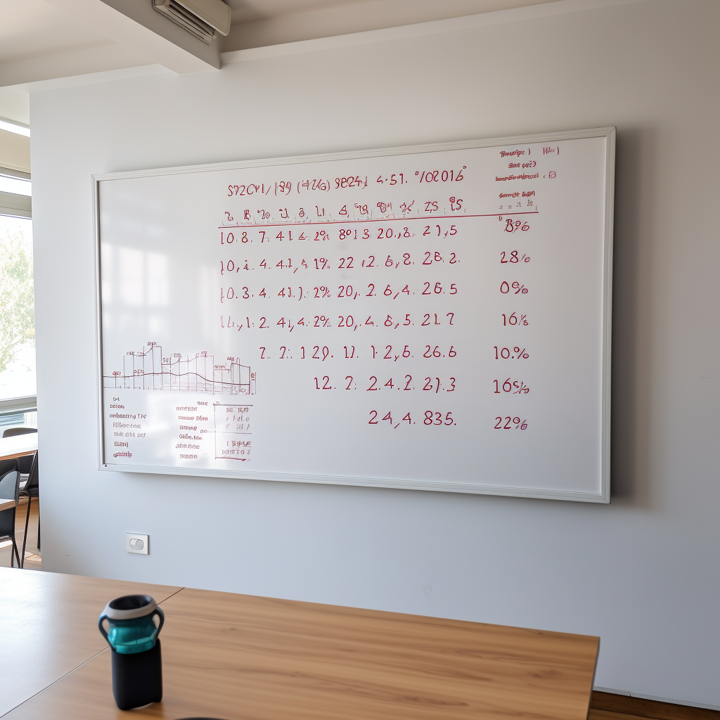Wie schwer das Errechnen eines Anteils von Hundert ist, beweist der SPD-Vize Michael Miersch im Bundestag. Seine Fraktion teilt seine Rechenkünste auch noch brav im Netz. Laut Miersch gehen 50% des Etats des Umweltministeriums in die Endlagerkosten für den deutschen Atommüll. Tatsächlich sind aber weniger als 30%. Die sogenannten Community-Notes klären Twitter-X Nutzer über die Falschaussage auf. Endlagerkosten sind zudem zusätzlich falsch, weil die Kosten die Suche nach einem Endlager betreffen. Für das Endlager selbst liegen 24 Mrd. Euro in einem Fond, eingezahlt von den Betreibern der Kernkraftwerke. Irgendwie nur peinlich.

(Abbildung: Screenshot Twitter X)
Irgendwie war den Genossen diese Sache dann doch zu heikel. Bevor also die Dyskalkulie von Miersch weitere Kreise zieht, wurde das Posting gelöscht. In seiner Bundestagsrede bleibt die Glanzleistung allerdings erhalten.
+++
Wasserstoff wird bisher fast ausschließlich künstlich gewonnen. Das macht seinen Preis aus. Über natürliche Wasserstoff-Vorkommen haben wir vor einiger Zeit schon einmal berichtet. In den USA scheint jetzt die Bereitschaft zu wachsen, in die Erkundung und möglicherweise Förderung von natürlichem Wasserstoff zu investieren, wie Science.org berichtet.
“A dark horse concept in the race to develop clean and sustainable energy sources is getting its first major investment from the U.S. government. Today, the Advanced Research Projects Agency-Energy (ARPA-E), the high-risk, high-reward arm of the Department of Energy (DOE), announced it would fund $20 million in grants to advance technologies for extracting clean-burning hydrogen from deep rocks. At the moment, all of the world’s hydrogen is manufactured industrially. But some researchers have concluded that, contrary to conventional wisdom, Earth harbors vast deposits of the gas that could be tapped like oil—and that reserves could be stimulated by pumping water and catalysts into the crust.
The ARPA-E funding “will be the largest single investment in R&D of this nature worldwide,” says Yaoguo Li, a geophysicist at the Colorado School of Mines who plans to apply to the program. “It’s so new, a lot of other agencies and other countries are just waking up to this possibility.””
+++
Im Grunde gleichen die Probleme in den USA denen in Deutschland. Aus zentraler Stromversorgung soll ein Mix werden, bei dem es auch dezentrale Erzeugung gibt. Die Verteilnetze sind dieser Entwicklung nicht gewachsen. In den USA können Wind und Solarprojekte nicht realisiert werden, weil die Reihenfolge, erst die Infrastruktur zu bauen und dann die Erzeuger, nicht eingehalten wird. Science.org (Artikel hat eine Bezahlschranke ab dem Aufruf eines dritten Artikels). Am Ende geht wie auch in Deutschland darum, wer diesen Umbau bezahlt. Die Antwort ist einfach, es sind die Stromkunden, ob sie wollen oder nicht.
“EVEN AS EXPERTS debate model tweaks that might ease clean energy connections, others are calling for more attention to the risk that wind and solar generators may react to electrical disturbances in unexpected ways. Those anomalies, they say, could pose a greater threat to the grid than congestion. Researchers point to a near-disaster that occurred in Texas on 4 June 2022. It started with an equipment failure at a gas-burning power plant in Odessa, which caused the 550-megawatt plant to “trip,” or go offline. The shutdown perturbed the voltage of electricity flowing across western Texas. That should not have caused serious problems. Almost instantly, however, a dozen big solar farms in west Texas, which were generating 1700 megawatts at that moment, also tripped offline. The interruption briefly threatened to take down parts of the grid. An investigation by the North American Electric Reliability Corporation (NERC), an industry group, pointed a finger at the solar plants’ inverters—core equipment that converts the direct current from these generators into alternating current that matches what’s already flowing on the grid. The inverters’ programmable controls had been set in such a way that they didn’t “ride through” the disturbance, as they are supposed to do.”
Weiterlesen auf Science.org
+++
Schleswig-Holstein liegt beim Zubau von Windkraft in 2023 zu.
Für die Bürger in dem Land sind das keine guten Nachrichten, denn dadurch steigen die lokalen Netzentgelte, auch wenn der Strom in andere Bundesländer abgeführt wird.

(Abbildung: Screenshot energy-charts.info)
+++
Die ETH Zürich gehört zu den angesehensten Hochschulen der Welt. Vor kurzem hat sie aber einen Artikel verbreitet, in dem fälschlicherweise behauptet wurde, Hitzewellen würden tödlicher. Allerdings ist im Artikel kein einziger Beleg zu finden, wonach es mehr Hitzetote gibt. Allein das Risiko dafür soll angestiegen sein. Alex Reichmuth hat die irreführende Art der Information im Nebelspalter (https://www.nebelspalter.ch/eth-zuerich-irrefuehrende-behauptungen-zu-hitzewellen) thematisiert.
ETH Zürich: Irreführende Behauptungen zu Hitzewellen
«Hitzewellen werden häufiger und tödlicher»: Unter diesem Titel verbreitete die ETH Zürich, eine der renommiertesten Hochschulen der Welt, vor wenigen Tagen einen Artikel (siehe hier). Darin war zu lesen: «Hitzewellen mit vermehrten Todesfällen aufgrund von Dehydrierung, Hitzeschlag oder Herz-Kreislaufkollaps nehmen zu.»
Wer im Text allerdings nach Belegen für eine effektiv gestiegene Zahl von Hitzetoten suchte, wurde nicht fündig. Es ging im Artikel um eine wissenschaftliche Studie namens «Schneller Anstieg des Risikos von hitzebedingter Mortalität», verfasst von einem internationalen Team unter Leitung des ETH-Doktoranden Samuel Lüthi. Wichtig ist dabei das Wort «Risiko». Die Forscher hatten nicht tatsächliche Hitzetote gezählt, sondern lediglich modelliert, wie sich das Risiko einer hitzebedingten Übersterblichkeit an 748 Orten in 47 Ländern entwickelt haben könnte.
Mehr dazu im Nebelspalter (https://www.nebelspalter.ch/eth-zuerich-irrefuehrende-behauptungen-zu-hitzewellen
+++

+++
Study of deep-sea corals reveals ocean currents have not fueled rise in atmospheric carbon dioxide
Pioneering analysis of deep-sea corals has overturned the idea that ocean currents contributed to increasing global levels of carbon dioxide in the air over the past 11,000 years.
The study, led by the University of Bristol in the UK and Nanjing University in China, examined historic deep-sea corals to shed intriguing new light on the history of ocean chemistry.
Understanding what has led to the pre-industrial rise in carbon dioxide (CO2) levels during the Holocene period, which dates back some 11,700 years to the present day, is a source of scientific debate. One theory suggests the increase in physical upwelling of carbon-rich deep waters to the surface of the Southern Ocean, in other words changes in high-latitude ocean circulation, may have triggered the release of marine carbon into the atmosphere, although this is not fully understood.
Lead author Tianyu Chen, Professor of Marine Geochemistry at Nanjing University and the University of Bristol, said, „Our research challenges assumptions about the role of ocean circulation in the carbon cycle during the Holocene. By providing radiocarbon evidence for the stability of these processes, we pave the way for a deeper understanding of the complex interactions between the ocean and the Earth’s climate system.“
The Holocene, which followed the retreat of major ice sheets in the Northern Hemisphere, is the Earth’s most recent interglacial period and has long intrigued scientists studying Earth’s recent climate history. A key aspect of this period is the rise in atmospheric CO2 levels. Initially, in the early Holocene, CO2 levels were approximately 260 parts per million by volume (ppmv). However, over the course of around 5,000 years they increased by 20 ppmv, equivalent to around 150 gigatons of CO2.
Corals are remarkable organisms, which have thrived on seamounts over the course of the Holocene. The international team of researchers meticulously dated deep sea coral data from the Drake Passage, located between South American and Antarctica, as well as the Reykjanes Ridge, south of Iceland, from this period. These corals live at water depths stretching 1,900 meters within Antarctic circumpolar waters and North Atlantic Deep Water.
Surprisingly, the radiocarbon data suggested ventilation in the Antarctic circumpolar waters and North Atlantic Deep Water remained relatively stable.
The findings, published in Nature Geoscience, indicate long-term polar ocean mixing between surface and deep water, on the millennial scale, did not undergo significant disturbances. Consequently, it suggests the North Atlantic and Southern Ocean circulation alone did not drive the rise of atmospheric CO2 levels during the Holocene. Instead, the researchers propose biogeochemical cycles that redistribute nutrients and carbon in the ocean and on land may have influenced this rise.
Co-author Dr. Joseph Stewart, Research Fellow in Geochemistry at the University of Bristol, said, „Thanks to the decay of radioactive isotopes within their skeletons, deep-sea corals effectively contain two ‚clocks.‘ Trace amounts of uranium-238 within the corals gradually decays to thorium-230 allowing us to accurately assess their age by measuring this isotope ratio.
„The second clock, radiocarbon (carbon-14) also slowly decays away, however it predominantly enters the oceans via the atmosphere. The radiocarbon content of corals therefore tells us how long radiocarbon-depleted deep waters have been out of contact with radiocarbon-rich surface waters. By using both ‚clocks‘ together we were able to assess the rates of ocean ventilation during this key interval.“
This study represents an important step forward in unraveling the relationship between ocean circulation, carbon cycling, and climate dynamics during the Holocene. A future comprehensive understanding of natural and human-induced variations in carbon cycle will be essential to fully comprehend the Holocene atmosphere’s carbon budget.
Co-author Laura Robinson, Professor of Geochemistry at the University of Bristol, added, „These findings contribute to the growing body of knowledge in this field and underscore the importance of further exploring the mechanism that decouples the biogeochemical cycle and physical ocean circulation during the Holocene.“
Paper: Tianyu Chen, Radiocarbon evidence for the stability of polar ocean overturning during the Holocene, Nature Geoscience (2023). DOI: 10.1038/s41561-023-01214-2. www.nature.com/articles/s41561-023-01214-2
